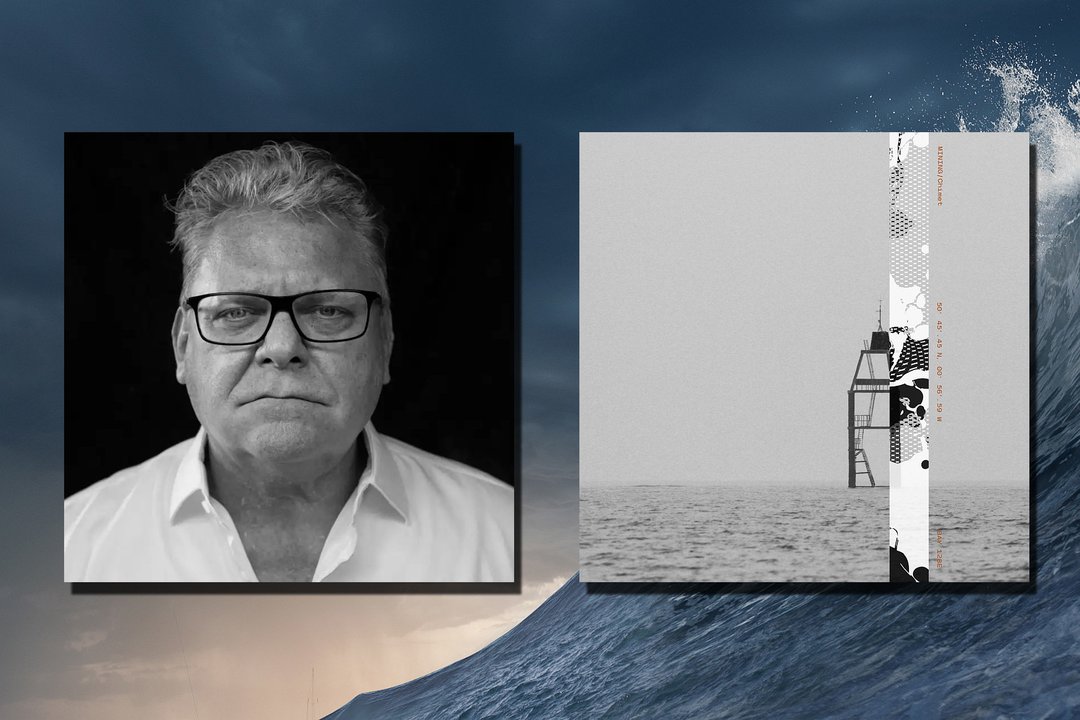#Spanish #produce #electricity #sun #hours #day #mirrors #concentrate #light #place
Renewable energy sources are becoming cheaper, more common and produce clean energy. However, their dependence on weather conditions means that they cannot operate always. But are you sure? – We produce energy from the sun 24 hours a day – says Sebastián Fernández from Torresol. The installation in the south of Spain combines energy production and storage.
From a distance, the Gemasolar tower resembles a lighthouse – only it shines in the middle of the day. Up close, the top of the tower is as bright as a second sun, and small wisps of smoke appear next to it when the wind carries leaves or pieces of grass to the surface heated above 500 degrees Celsius. This power plant based on the concentration of solar energy allows you to produce electricity from the sun 24 hours a day.
Watch the video Paweł Lachman: Obligation to renovate the building during thermal modernization? Rather, it will be the state’s obligation to support it
Poland, like many other countries, is going through a photovoltaics boom. The price of panels for producing electricity from the sun has dropped so much in recent years that it is profitable to make fences out of them . In Poland, on sunny days, up to half of the energy produced in one hour may come from photovoltaics (on a daily basis, the sun can produce up to approx. 20% of electricity).
The problem is that the operation of photovoltaic panels changes rapidly during the day. It goes from zero to maximum within a few hours and drops just as quickly as evening approaches. There are already days when at noon we have more energy from the sun than we can use. But on the same days, when darkness comes, production drops to zero. What if she could be stopped? This is exactly what the Spaniards are already doing at the Gemasolar power plant in the south of the country. However, the key is to use a completely different method than photovoltaics: the installation uses concentrated solar energy (CSP, from the angelic name concentrated solar power).
The sun melts the salt
– This is the first commercial installation of this type. Over the years of operation, it has shown not only that it can function, but that it is profitable, and the parameters are better than expected – says Sebastián Fernández, director of the power plant. During the summer months, it produces clean electricity from the sun 24 hours a day.
From the windows of a small office you can see a huge power plant. The bright spot at the top of the tower, which can be seen from a distance, is the heart of the entire power plant. It is surrounded by 2,600 mirrors, each with an area of 100 square meters. They follow the sun, reflect its radiation and focus it on the top of the 140-meter tower. There are pipes with liquid salt there. It’s not table salt, but it’s not a rare or dangerous substance either. This includes: sodium nitrate, commonly used as fertilizer. When heated to the appropriate temperature, the salt turns into a liquid. And the energy stored in it (in the form of heat) can be used.
The top of the 140-meter tower at the Gemasolar power plant is heated by 2,600 mirrors reflecting sunlight. Photo: Patryk Strzałkowski
Molten salt flows from a “cold” reservoir with a temperature of 290 degrees Celsius (necessary for it not to harden) through the top of the tower and heats up there to about 560 degrees. The rest of the process is relatively simple. The hot salt heats the water, the steam drives a turbine and electricity is produced. As the salt slowly loses its temperature, the salt heated during the day can power the power plant for the entire night. The installation has a capacity of 20 megawatts, which – according to the power plant operator – allows to power an average of 27,000. households.
The power plant – the first commercially operating one of its kind – is functioning better than expected. The mirrors generate more energy than expected, the turbine can operate longer, and the achieved electricity production is slightly higher than originally expected.
A graph showing the production of electricity (red line) during the day and at night – thanks to heat storage. Photo. Patryk Strzałkowski
From the owner’s point of view, the key thing is that the installation is not only ecological, but also profitable. The investment of EUR 230 million is returned after less than half of the planned life of the installation. This will be pure profit for the next dozen or so years. What is particularly important is that this type of solar power plant allows you to sell energy not only in the middle of the day (when photovoltaics ensure oversupply and low prices), but also at night, when prices rise.
What are the development prospects for this technology? – It’s a small installation. The newest power plants of this type have 100 megawatts each, says Fernández. This is half the power of the smallest units in Polish coal-fired power plants. Since Gemasolar was built in 2011, several larger power plants of this type have been built around the world. In Spain – according to Fernández – there are currently no plans to build more. Why, if this operation is profitable? The head of the installation blames the unpredictable energy market and the lack of price stabilization, which makes it difficult to assess when, if at all, the construction of a new power plant will be profitable. Geography is also a limitation.
Each mirror in the Gemasolar power plant is 100 square meters. Photo: Patryk Strzałkowski
The necessary sun of Andalusia
Unfortunately, the vision of producing energy from the sun 24 hours a day will not work everywhere. Similar installations have already been created, among others: in the United Arab Emirates, Peru and Morocco. However, there are few regions in Europe with sufficient sunlight. Among the few, there is the south of Portugal or Spanish Andalusia. The potential for energy production from the sun can be checked using data on the average amount of sunlight per year. This is what the potential map for photovoltaics looks like:
Map of the potential for energy production from photovoltaics. Photo. 2021 Solargis
While photovoltaics makes sense practically throughout Europe, installations such as Gemasolar will only be used in regions with the best conditions. Even in the south of Spain they have their limits. In the sunniest months, especially summer, it easily produces electricity 24 hours a day throughout the month. But in winter, there is not always enough sun to store energy for the entire night, especially when there are a few short, cloudy days. Then there are interruptions in production.
This installation is part of the energy puzzle of Andalusia and Spain, which strive for climate neutrality and relying mostly on renewable energy sources. In 2023, the country had nearly 50 percent. electricity from renewable sources and 21 percent from nuclear power plants. The rest was mainly gas. Improving efficiency and storing energy will allow us to move further away from fossil fuels. Andalusia itself is focusing on further expansion, including: solar energy so as to derive 75% by 2030. electricity from renewable energy sources.
The lack of such solar conditions does not mean that, for example, in Poland there is no possibility of storing energy from renewable sources. The simplest method is energy storage based on batteries, similar to those in electric cars. Such battery energy storage units (not necessarily with batteries containing relatively rare lithium ) can work well to provide energy for a few hours after sunset, or in best cases overnight.
We also already have large-scale energy storage facilities with pumped storage technology in operation. The principle of their operation is simple: water is pumped into the reservoir above when there is a surplus of energy (e.g. when there is a lot of sun or wind) and released when these sources are not working. There are plans to build new installations of this type. Other methods of storing energy from renewable sources are also being developed, such as: gravity warehouses Whether heat storage.
Beer cooked in the sun
Several dozen kilometers from the Gemasolar power plant, there is a new installation – several months old – which also uses concentrated solar energy. However, it has a completely different purpose: it produces heat for… brewing beer.
The Heineken brewery needs high temperatures to heat ingredients in the beer preparation process itself, as well as at other stages of production (warm water for washing the installation, etc.). Previously, heat was produced from gas, which means large greenhouse gas emissions. Now most of it (over 60%) comes from the sun, some from renewable biogas, and a small remaining part still needs to be produced using gas.
Cylindrical mirrors that tilt according to the position of the sun focus light onto thin tubes of water. This goes into large silver tanks. The water is under high pressure, which allows it to reach temperatures of up to 200 degrees Celsius. The tanks maintain high temperature for up to 8 hours.
Concentrated solar energy is used to heat water in a brewery in southern Spain. Photo: Patryk Strzałkowski
The company’s representatives admit that the modern installation helps reduce greenhouse gas emissions, but would not be profitable. It was built thanks to funding from a grant. However, the company treats it on the one hand as a means to achieve its climate goals, and on the other – as a demonstration of a new technology that will become profitable in the future.
Heating water using the sun may have wider applications for industry. It does not always have to be an installation that reaches a temperature of 200 degrees. Traditional solar collectors can more easily heat water to approximately 80 degrees Celsius. Even if you later need to use other fuels to bring the water to 100 degrees, much less energy (and therefore fuel) will be needed than if the starting point was 10 degrees.
The material was prepared during a trip organized by the European Commission.




:quality(85)/cloudfront-us-east-1.images.arcpublishing.com/infobae/SITXPTN6HJH6XI6B4BH7FKIPGA.jpg)



